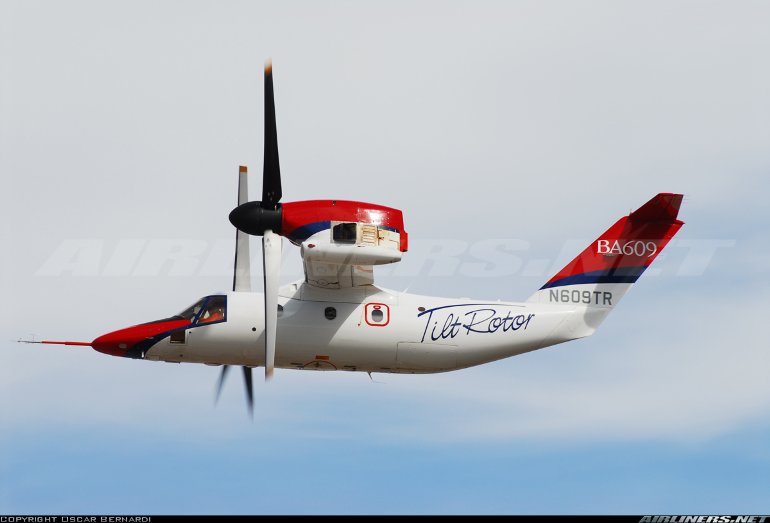Aircraft Technical Data
Bell-Agusta BA-609

| Details | |
| Country of Origin | United States of America |
| Type | Six to nine seat corporate/utility tiltrotor |
| History | The Bell BA 609 is set to become the first civil application of the revolutionary tiltrotor technology, taking advantage of its experience with the military V22 Osprey. Bell pioneered the tiltrotor concept with the experimental XV3 which first flew as early as 1957 and then with NASA developed the XV15 experimental demonstrator which first flew in 1977. In conjunction with Boeing it is building the military V-22 Osprey - the first production Ospreys are due to be delivered to the US Marines in 1999. In late 1996 Bell and Boeing announced that they intended to use their expertise and experience with the V22 to develop a nine seat civil tiltrotor. The Bell Boeing 609 was formally unveiled on November 18 1996. However in early 1998 Boeing announced its withdrawal from the program as a risk sharing partner to remain as a major subcontractor. Then in September that year Bell announced that Agusta would become a risk sharing development partner in the redesignated BA 609. Agusta will participate in BA 609 development, manufacture components and assemble BA 609s for European and other markets. First flight for the BA 609 is planned for mid 1999 with certification and first deliveries scheduled for April 2002. (The US FAA is drawing up a new certification category for tiltrotors and a new pilot type rating.) The benefits of a tiltrotor are that it has the vertical takeoff, landing and hovering abilities of a helicopter combined with fixed wing turboprop speed and performance. As such Bell anticipates that the 609 will compete against helicopters such as the Sikorsky S76 and turboprops such as Beech's King Air. As well as point to point corporate transport Bell envisages that the 609 will be used for offshore oil rig support, search and rescue and medevac missions, where its unique capabilities would be particularly useful. The 609 will incorporate advanced technologies such as a glass cockpit, flybywire flight controls and a composite construction fuselage. Power will be from two PT6C67A turboprops. The 609 could form the basis for a family of civil tiltrotors. |
| Powerplants | Two 1378kW (1848shp) Pratt & Whitney Canada PT6C67A turboprops driving three blade proprotors. |
| Performance | Provisional - Max cruising speed 510km/h (275kt), normal cruising speed 465km/h (260kt). Operational ceiling 25,000ft. Range with a 2500kg (5500lb) useful load at 465km/h (260kt) 1400km (755nm). |
| Weights | Provisional - Empty 4765kg (10,400lb), max takeoff 7265kg (16,815lb). |
| Dimensions | Provisional - Proprotor diameter 7.9m (26ft), span between proprotor centres 10m (33ft), fuselage length 13.4m (44ft), width overall rotors turning 18.3m (60ft), height 4.6m (15ft). |
| Capacity | To be certificated for single pilot IFR operation. Main cabin seats six to nine passengers depending on configuration. Could also be configured for search and rescue/medevac. |
| Production | First deliveries planned for April 2002. Unit price $US810m depending on configuration. Potential market estimated at up to 1000 over the next two decades. |
| Related Links | Bell-Agusta BA-609 |
The backbone of this section is from the The International Directory of Civil Aircraft by Gerard Frawley and used with permission. To get your own copy of the book click here. |
|








